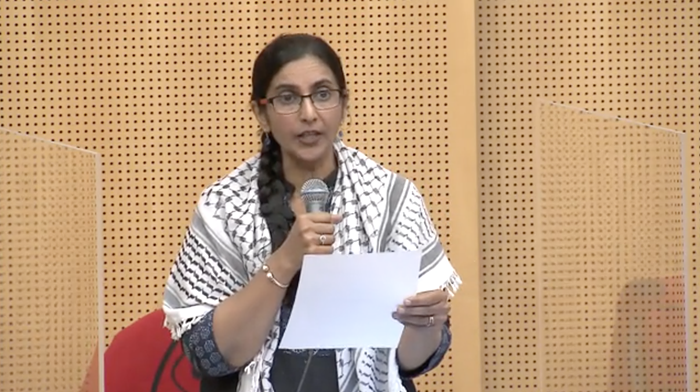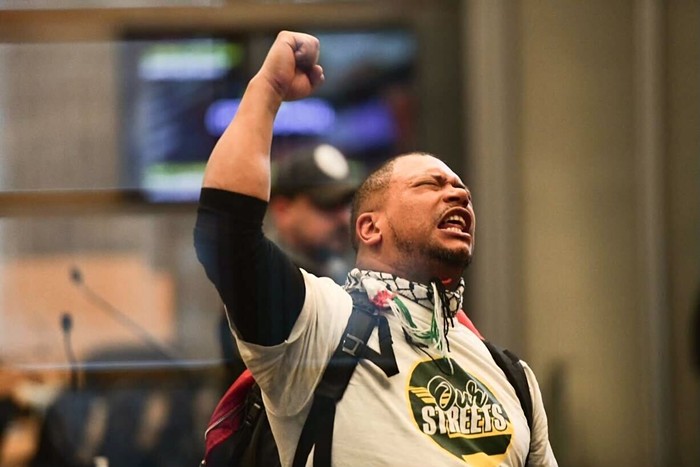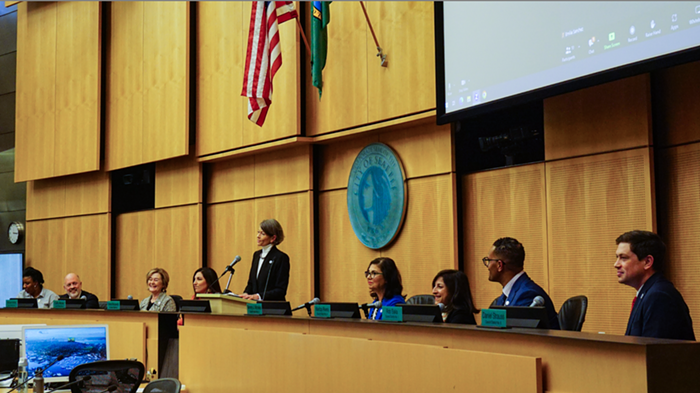
During the 12 days of severe weather from late December to early January, the newly established King County Regional Homelessness Authority (KCRHA) and the Seattle Human Service Department (HSD) only filled three-quarters of the emergency shelter system on their first try at co-managing a response to an extreme weather emergency.
Specifically, the agencies opened six overnight shelters in Seattle with a capacity to host 374 people. HSD acting director Dr. Tanya Kim said they provided 2,116 total overnight stays during the emergency, referring to the number of occasions in which someone slept in a shelter bed during that time. With thousands more estimated living outside, the agencies could have gotten more people indoors.
In a presentation to the Seattle City Council’s Public Assets and Homelessness Committee, the KCRHA and HSD chalked up these poor numbers primarily to challenges in transportation and staffing.
The need to learn from mistakes made feels all the more urgent with climate change contributing to more intense weather.
Lethal Temps
Last year, the region experienced extreme weather on both sides of the spectrum. On the third-consecutive day of triple-digit temperatures in June, Seattle hit an all-time record temperature of 108 degrees. Just six months later, a cold snap at the end of 2021 covered the city with more than double its usual December snowfall. Temperatures plummeted to record-breaking lows on Dec. 26 and 27 during a stretch of bone-chilling cold that marked the longest period of subfreezing temperatures since 1998.
For Seattlites who live inside, extreme weather serves as an annoying reminder of the ongoing climate disaster and the lack of adequate insulation in many apartment buildings. But for the people who live outside, extreme weather can be a death sentence.
Of the 178 homeless people in King County who died on the streets last year, 10 died on account of weather, according to a press release from WHEEL, an organization of homeless and formerly homeless women that hosts vigils to honor the unhoused dead.
“The cold was lethal. It absolutely would have, and, I believe, in some cases did cause death,” said KCRHA director Marc Dones during their presentation to the council.
I asked Public Health – Seattle & King County if anyone died outside as a result of the last cold snap, and I’ll update this post when they respond with the information.
Transportation issues
The agencies told the council that limited transportation presented a major hurdle for people seeking shelter.
From Dec. 27 to Jan. 2, King County Metro shifted bus service to the Emergency Snow Network, which slowed down public transit just as the bad weather triggered a rush to get unhoused Seattlites inside.
Unhoused people can also try their luck getting a rideshare through KCRHA. Dones said that the KCRHA had access to Lyft vouchers, but those vouchers were capped at $30. Rideshare prices surged during this time due to the weather.
Councilmember Andrew Lewis, the Chair of the Public Assets and Homelessness Committee said he wants to see quicker action for getting people inside. He said when the forecast shows snow, the city and county should work to get people to shelter before the roads get too treacherous.
But even if KCRHA could get the buses and vehicles to transport people to shelter, it can be difficult to convince an unhoused person to leave all their possessions behind. In response to that issue, Lewis suggested offering more storage options so people don’t have to choose between a warm place to sleep and their important belongings.
Kim said that suggestion was already on a long to-do list.
A “perfect storm”
Staffing shortages also plagued the extreme weather response. At a meeting of the KCRHA’s governing board last week, Dones said that some shelters in the county had to operate with just one staffer.
Compass Housing Alliance was one of the six shelters that activated its emergency protocols in response to the weather. Executive director Mary Steele said the shelter experienced “a perfect storm” for staffing shortages with the combination of the holiday season, dangerous roads, and uptick in COVID-19 cases. It was all hands on deck – even Steele, in an administrative role, took up shelter shifts.
In response to the shortage, the city offered incentive pay of up to $150 per shift for certain frontline workers to work in shelters. According to Kim, 171 city employees opted in to be deployed as needed. Steele said this move from the city helped her shelter’s shortage issue.
More money or more coordination?
In that spirit, the KCRHA said in a meeting last week, it will establish a “pooled staffing system” that would allow staff at homelessness service providers to work at shelters operated by another provider in an emergency.
Dones also asked the council to give the agency money for an emergency fund with “broad flexibility.”
In a phone interview, Lewis said the council is generally supportive of an emergency fund for KCRHA – Seattle already provides the authority with 66% of its funding – but he wondered if the agency’s emergency response issues had more to do with funding or in coordination. He would like to see how much staffing and transportation issues could be solved with better planning and communication. He also suggested that the city could train some of its own personnel to work shifts at shelters for overtime pay, or even call on the national guard for setup and administrative work similar to the stuff they did for the mass vaccination site at CenturyLink Field.
If the council did decide to create an emergency fund for the KCRHA, they’d have to do so in a supplemental budget. Typically, the council shifts money around on a quarterly basis, but it can amend the budget at any time, though the money for the fund would come at the expense of other programs unless it dropped out of the sky.
Lewis cited trust as another issue to dumping more money into the KCRHA. After four years of former Mayor Jenny Durkan not delivering on council priorities, he wants some assurances that council funding would translate to action from the new mayor, or, in this case, the KCRHA.

Mayor Bruce Harrell addressed those concerns in his remarks at the beginning of the meeting. He said he and former council member Tim Burgess knew the responsibilities of the council and understood how they’ve often been “blamed for inaction of executives.” He said he wanted to see the council as a partner, not as an impediment.
Aside from potentially tossing KCRHA some extra cash, Lewis had a more proactive solution to extreme weather emergencies: Get people inside and keep them there.
Over the phone, he said the council was in the “implementation stage” when it comes to getting people into permanent housing. Last year, the council voted to amend the land use code, exempting permanent supportive housing from design review and other processes that slow construction. So far, the Seattle Office of Housing said four projects are likely using this legislation to get people inside faster.
“I'll just say the best thing we can do to prepare for these natural disasters is just get more people into housing and shelter now, before the disaster happens,” Lewis said.



















